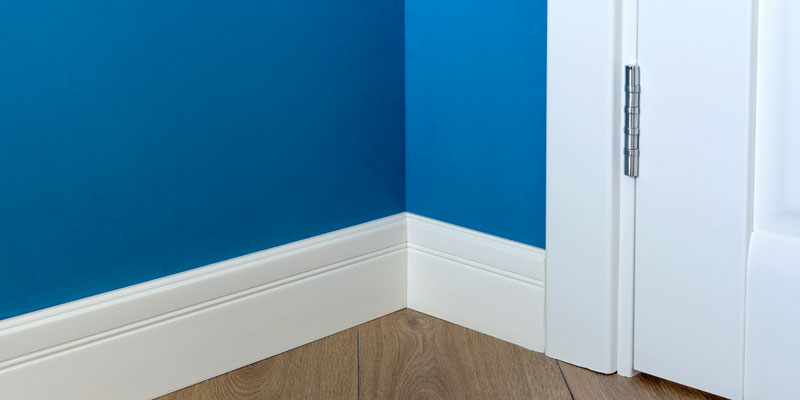Effectively Paint Corners and Edges
Paint rollers are great and allow painters to cover a lot of surface area, but they are not very effective for all the detail work required in almost every painting project. Fortunately, there are some tools and techniques that can make painting tricky edges and corners noticeably easier.

Protection First
You know what surface you want to paint, but there are probably plenty of nearby surfaces you want to avoid painting. Always protect adjacent surfaces you don't want to paint with drop cloths and/or painter's tape. For example, FrogTape can keep the paint bleeding that sometimes occurs even with traditional blue painter's tape. It's also a good idea to have a clean, damp rag or paper towel nearby to immediately wipe up unwanted splatters and drips.
Corners
There's just no other way around it; you need to use a paintbrush in corners. It is very difficult to get a roller to thoroughly paint all surfaces in corners, and they often leave a small line of excess paint. This forces the painter to use a paintbrush anyway to feather away the lines. Try to get as close as possible to corners with the paint roller but have a brush handy to feather away any lines. When ready, paint the entire corner with a brush, watching closely for and removing any drips.
Edges
If you have both ceiling trim and baseboard trim, you'll probably want to paint the ceiling trim first, then the walls, and then lastly, the baseboard trim. If you make small mistakes painting the ceiling trim, those are easily covered when painting the wall. For painting wall edges, it is best to paint the edges first, then paint the rest of the wall surface with a paint roller.
There are two ways to paint wall edges near the ceiling. You can either use a paint edger device or use a good-quality angled paintbrush. Experiment with both to decide which one works best for your project and situation.
Paint edgers allow one to apply paint to areas near the ceiling without getting on a ladder. The main caveats are to avoid getting paint on the wheels, which causes the paint to splatter, and the edger may leave paint lines that need feathering away with a paintbrush.
If you decide to use a paintbrush, don't skimp on quality, and consider an angled-edge paintbrush. You will be amazed how a good paintbrush will give you clean lines and shorten the length of your painting project. Use a steady hand and keep your eye on the area you are painting at all times!
After finishing most of the wall with the roller, then paint the area left over near the baseboard. Remove the FrogTape from the baseboard trim and paint the trim by simply painting over any small mistakes you made when painting the wall edge.
A painting project with corners and edges can be difficult, but with the right tools or painting help, you can easily get around it. If you would like to know more about how to get clean, beautiful corners and edges from professional painters, contact us today!
About the author
Chase DeRousse is the Vice President of Painting at Major Painting and strives to deliver quality craftsmanship coupled with superior customer service, creating a unique and pleasant experience for all Major Painting customers, no matter the size of the project. Chase also holds an active Class A General Contracting License.
Chase has won multiple accolades recognizing his leadership and excellence in the painting industry including awards from the Painting Contractor Association (PCA), Business Owners and Managers Association (BOMA), and Institute of Real Estate Management (IREM).